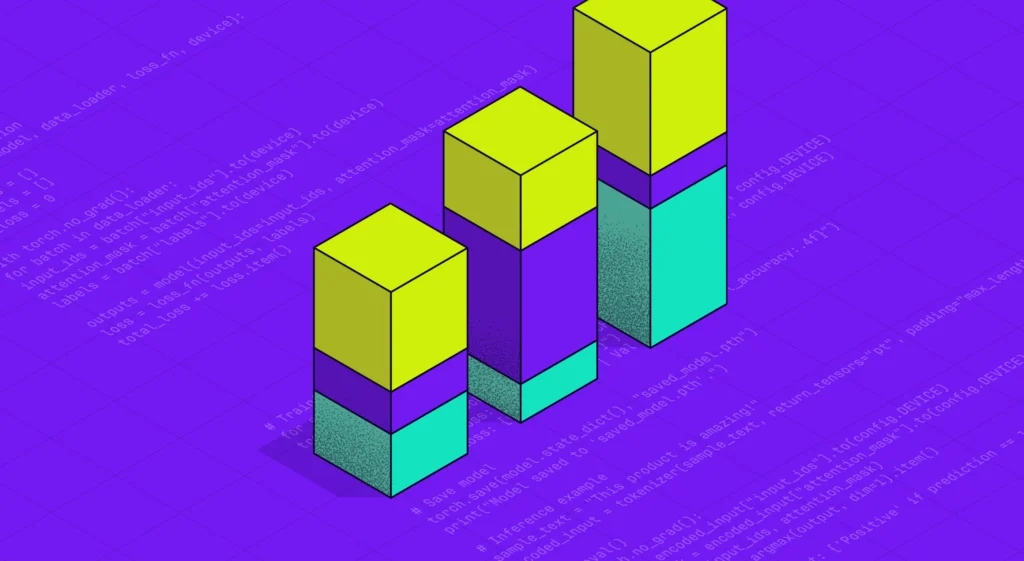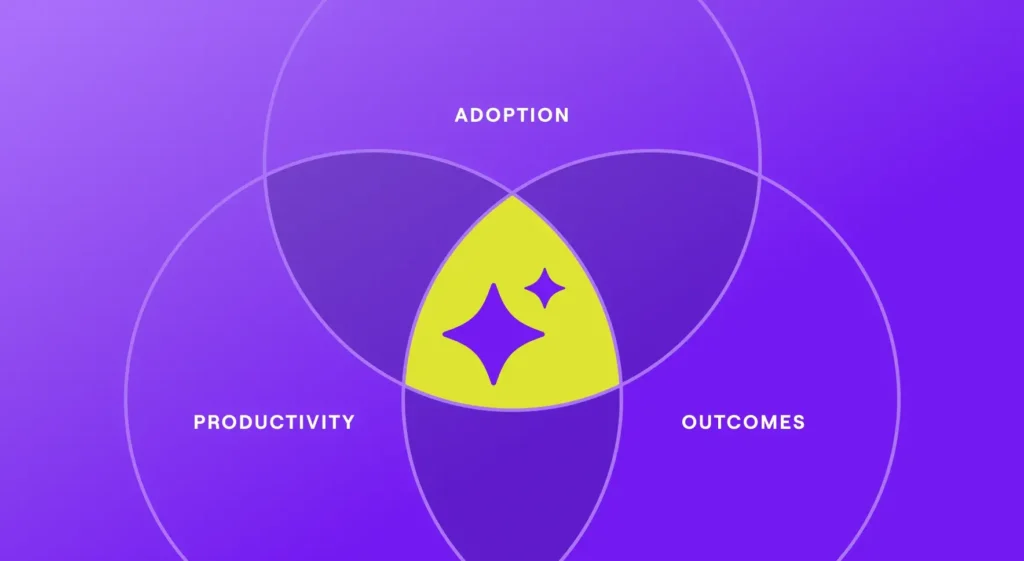In this article
What is Code Complexity?
What is Code Complexity?
Code complexity refers to the ease or difficulty in comprehending and maintaining a particular software system or segment of a codebase. It’s a fundamental concern in the software development life cycle, as the more complex the code is, the harder it becomes to analyze, test, understand, and modify it. This intricacy also multiplies the potential for error and technical debt (the price you pay for shortcuts), which can impact project schedules, costs, code quality, and overall performance.
Code complexity can exist at multiple levels. It can reside at the system architecture level, within individual modules, or in single code blocks. It’s usually quantified using measures like cyclomatic complexity, a metric Thomas McCabe established in the 1970s.
Cyclomatic complexity measures the number of linearly independent paths through a program’s source code, indirectly measuring understandability and maintainability.
Managing code complexity is important to the efficiency and functionality of a software system because a software system that’s easier to comprehend requires fewer resources in terms of time, effort, and cost. It also reduces the likelihood of failure, protects against potential security vulnerabilities, and improves performance and usability.
Several primary factors influence code complexity, including:
- Number of methods or functions
- Size of individual methods
- Degree of nesting
- Use of inheritance
- Connectedness between different code elements
- Conditional statements (e.g., if-else, switch-case)
These components are often intertwined, making it vital to consider them holistically, not just independently.
While measuring code complexity can help engineers understand the technical intricacy of their code, it is important for leaders not to get too caught up in tactical software metrics. In order to contribute to the business effectively, engineering leaders must strive to influence product strategies and define the trajectory of what might lie ahead.
Today, software engineering is not confined to the technical precincts but embraces business aspects. By merging core engineering prowess with business acumen, leaders can construct software that not only stands the test of time but also provides quantifiable business impact.
Importance of Measuring Code Complexity
Importance of Measuring Code Complexity
Measuring code complexity is crucial for ensuring the overall quality, maintainability, and performance of software. By quantifying and analyzing complexity, developers can gain valuable insights into the health of their codebase and make informed decisions to improve it.
Here’s how code complexity impacts key elements of software:
- Maintainability: High code complexity often correlates with reduced maintainability. Complex code can be difficult to understand, modify, and enhance, leading to increased development time and costs. When developers struggle to comprehend the intricacies of the code, they are more prone to introducing errors during modifications or adding new features.
- Debugging: Complex code presents significant challenges for debugging. The higher number of decisions (and therefore potential execution paths) present in the code, the harder it becomes to trace the flow of execution and pinpoint the source of an error. This can lead to longer debugging times and increased frustration for developers.
- Quality: Code complexity is often a strong indicator of overall code quality. Complex code tends to be less modular, less testable, and more prone to errors. Writing effective unit tests for complex code can be challenging, as the number of possible execution paths and interactions increases. This can lead to insufficient test coverage and a higher likelihood of undetected bugs.
- Performance: Code complexity can also impact the performance of software. Complex algorithms and data structures can lead to increased processing time and resource consumption. This can result in slower execution speeds, higher memory usage, and reduced overall performance.

10 KPIs Every Engineering Leader Should Track
Get eBookReasons for Code Complexity and Management
Reasons for Code Complexity and Management
The pressure to deliver software quickly, the evolving nature of software requirements, the lack of documentation, and the use of different programming languages and paradigms can lead to a high degree of complexity.
Fortunately, one can use various strategies to manage code complexity. Techniques that can lead to a reduction in complexity include:
- Abstraction: Helps reduce high complexity by concealing the technical details and emphasizing an object’s or process’s essential features.
- Encapsulation: Involves bundling the data with methods that operate on that data. It restricts direct access to some of an object’s components, which prevents accidental interference and misuse.
- Modularization: Involves dividing a software system into separate, independent modules that focus on specific aspects of the program, which makes the system more manageable, easier to understand, and adaptable.
- Simplification: Refers to making the code more understandable and easier to work with. This can involve refactoring code, reducing the number of entities or operations, and choosing more straightforward solutions.
In addition, by applying robust software design practices, using coding standards, and implementing automated code review tools, managing code complexity becomes feasible.
Failure to appropriately manage complexity can lead to problems and make the codebase challenging to maintain and comprehend. Conversely, the effective management of code complexity can boost productivity, enhance software quality, and encourage the development of sustainable, scalable software systems.
Types of Code Complexity
Types of Code Complexity
By marking distinctions between different code complexities, team members can gauge the value of their development team’s coding efforts more comprehensively and communicate this to stakeholders more effectively.
- Cyclomatic Complexity is an intricate complexity metric that quantifies the number of independent paths through a program’s source code.
- Cognitive Complexity reflects how easy (or not) it is to understand the code at a glance. It mirrors how rapidly and effortlessly you might grasp the code’s functions, parameters, and procedures.
Challenges and Consequences of High Code Complexity
Challenges and Consequences of High Code Complexity
High code complexity can create numerous hurdles that need to be overcome for software’s functionality and maintainability. A comprehensive understanding of these challenges and the consequences of high code complexity can help you strategically approach them, ensuring the long-term efficiency and effectiveness of software projects.
Maintenance
As code complexity increases, code readability decreases. This results in more time and energy — cognitive load or mental effort — spent understanding and modifying the code. That’s why in long-term software projects, high code complexity can lead to a potential increase in costs and time for maintenance activities.
Performance Problems
Complicated codes are more difficult to test, often requiring a larger number of test cases to achieve adequate coverage. This can lead to higher errors or software bugs. As a result, complex code can slow down the performance of a software system, reduce its reliability, and ultimately lead to user dissatisfaction. Given these challenges, it becomes pertinent to measure the complexity of your code.
How to Measure Code Complexity
How to Measure Code Complexity
The method commonly used to measure the complexity of the code is metrics, such as cyclomatic complexity, Halstead complexity, or the maintainability index (MI). These methods consider factors such as logical paths, variables, operators, and length of the code. By quantifying these different aspects of the code, you can clearly understand its complexity and address areas of concern effectively.
Let’s take a closer look at each code complexity metric.
Cyclomatic Complexity
Cyclomatic complexity quantifies the number of linearly independent paths through a program’s source code. It is calculated by examining the control flow graph of the code, where the number of nodes represents code blocks and edges represent the flow of execution between them.
Each decision point (such as an if-statement, loop, or case statement) adds to the number of edges, increasing the complexity. Higher cyclomatic complexity indicates a greater number of potential execution paths, which can increase the difficulty of testing, debugging, and maintaining the code.
Lines of Source Code (LOC)
This metric provides a basic measure of code size by counting the total number of lines of code in a source code file. While it offers a general indication of code volume, it does not distinguish between functional code, comments, or blank lines. Therefore, it may not accurately reflect the complexity or maintainability of the code.
Depth of Inheritance
Coupling refers to the degree of interdependence between different modules or components within a software system. High coupling indicates strong interconnections, where changes in one module are more likely to impact other modules, potentially leading to unintended consequences and increased maintenance effort. Depth of inheritance, in object-oriented programming, measures the number of levels in a class hierarchy. Deep inheritance structures can increase complexity and make it more challenging to understand and modify code due to the intricate relationships between classes.
Maintainability Index
The maintainability index is a composite metric that combines various factors, including cyclomatic complexity, Halstead volume, and lines of code, to assess the ease with which a piece of code can be maintained. A higher maintainability index suggests code that is more understandable, modifiable, and testable, indicating improved maintainability.
Cognitive Complexity
Cognitive complexity focuses on the mental effort required to understand a piece of code. It considers factors such as nesting depth, control flow structures, and recursion to evaluate the cognitive burden imposed on developers when reading and comprehending the code. Higher cognitive complexity suggests code that is more challenging to understand, potentially leading to increased development time and a higher risk of errors.
Halstead Volume
Halstead volume quantifies the size of a program based on the number of operators and operands used in the code. It provides a measure of the overall complexity of the code’s implementation, with higher values indicating greater complexity.
Rework Ratio
The rework ratio measures the proportion of code that has been modified or rewritten after its initial implementation. It provides insights into the efficiency of the development process and the quality of the initial code. A high rework ratio may indicate potential issues such as unclear requirements, design flaws, or inadequate testing, which necessitate code revisions and increase development effort.
The Value of Code Complexity Analysis
The Value of Code Complexity Analysis
Code complexity analysis identifies code that’s prone to errors, hard to understand, and difficult to maintain. By applying code analysis, you can rethink and rework those codes to simplify and streamline them, thereby improving the system’s performance and maintainability.
Code complexity testing is necessary to ensure the integrity and quality of a software system. It provides an opportunity to check various aspects of code, like its length, structures, logic paths, etc. This method not only ensures the code is efficient and maintainable but also mitigates risks related to bugs and system crashes due to complex codes.
High code complexity presents challenges. However, with diligence in code complexity analysis and proper measures to reduce complexity, software engineers can significantly improve the performance and maintenance of a software system.
How to Reduce Code Complexity
How to Reduce Code Complexity
Reducing code complexity is an ongoing effort that requires a combination of design principles, coding practices, and consistent refactoring. It’s about writing code that is not only functional but also easy to understand, maintain, and modify. Here’s a breakdown of key approaches:
Modular and Hierarchical Design
- Decomposition: Break down large, complex systems into smaller, more manageable modules. This promotes separation of concerns, making it easier to understand and work with individual parts of the code.
- Abstraction: Use abstract classes and interfaces to define common behaviors and hide implementation details. This reduces code duplication and promotes code reuse.
- Encapsulation: Encapsulate data and methods within classes to control access and minimize dependencies between different parts of the code.
Refactoring
- Continuous improvement: Regularly revisit and refactor code to improve the overall code structure, readability, and maintainability.
- Targeted refactoring: Identify code smells (e.g., long methods, large classes, duplicated code) and apply specific refactoring techniques to address them.
- Tools and automation: Leverage automated refactoring tools and IDE features to assist with common refactoring tasks.
Coding Practices
- Keep it simple: Strive for simplicity in both design and implementation. Avoid unnecessary complexity and over-engineering.
- Meaningful names: Use descriptive names for variables, methods, and classes to clearly convey their purpose and functionality.
- Single responsibility principle: Ensure each function or method has a single, well-defined responsibility.
- Reduce code duplication: Adhere to the DRY (Don’t Repeat Yourself) principle by extracting common code into reusable functions or methods.
Programming Paradigms
- Declarative programming: Focus on describing what the code should do, rather than how it should do it. This can lead to more concise and readable code.
- Functional programming: Leverage functional programming concepts like immutability and pure functions to reduce side effects and improve code predictability.
Code Reviews
- Peer feedback: Conduct regular code reviews to identify potential complexity issues and ensure adherence to coding standards.
- Collective ownership: Encourage collective code ownership and knowledge sharing to promote a consistent approach to code complexity management.
Eliminate Engineering Blind Spots with Jellyfish
Eliminate Engineering Blind Spots with Jellyfish
Jellyfish helps engineering leaders gain a clear understanding of how their teams are working and where their efforts are being invested. By analyzing data from various sources like Git repositories, project management tools, and communication platforms, Jellyfish provides insights into work distribution, investment allocation, and project progress. This allows leaders to make data-driven decisions about resource allocation, prioritize projects effectively, and optimize engineering workflows to ensure alignment with business goals and maximize productivity.
Here’s how Jellyfish can help:
- Identify bottlenecks and roadblocks: Jellyfish helps pinpoint areas where work is slowing down, such as long code review times or delays in specific project phases.
- Improve resource allocation: By visualizing how engineering effort is distributed across different projects and initiatives, Jellyfish helps ensure resources are allocated effectively to achieve strategic goals.
- Track project progress and predict delivery: Jellyfish provides real-time insights into project progress and helps identify potential risks or delays, enabling proactive adjustments to keep projects on track.
- Promote data-driven decision-making: Jellyfish empowers engineering leaders with data and visualizations to support informed decisions about resource allocation, project prioritization, and process improvements.
- Enhance collaboration and communication: By analyzing communication patterns and team interactions, Jellyfish can identify areas for improvement in collaboration and communication within engineering teams.

Interested in learning more about Jellyfish?
See how Jellyfish helps data-driven engineering teams ship better software faster and focus on what matters most to the business.
Tour the ProductAbout the author

Lauren is Senior Product Marketing Director at Jellyfish where she works closely with the product team to bring software engineering intelligence solutions to market. Prior to Jellyfish, Lauren served as Director of Product Marketing at Pluralsight.





